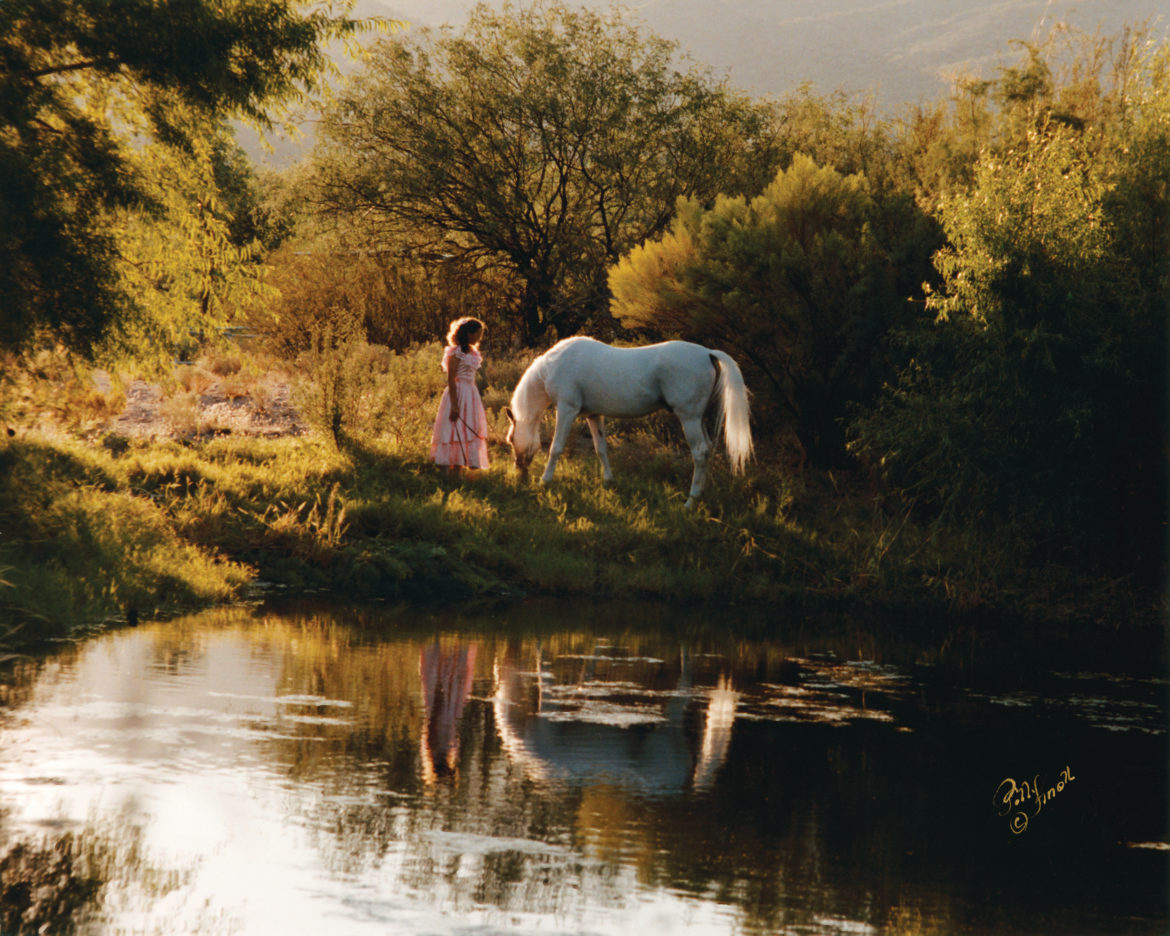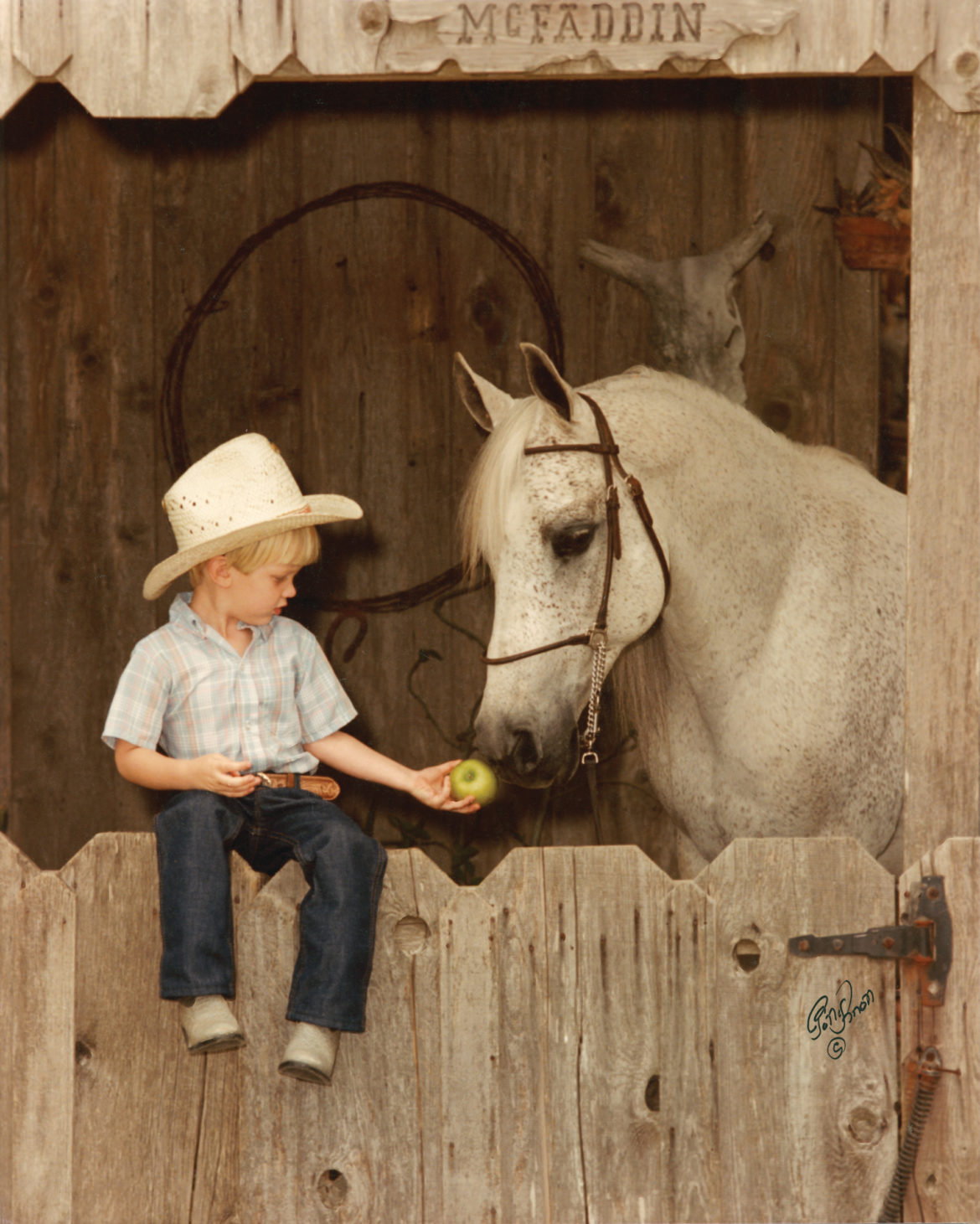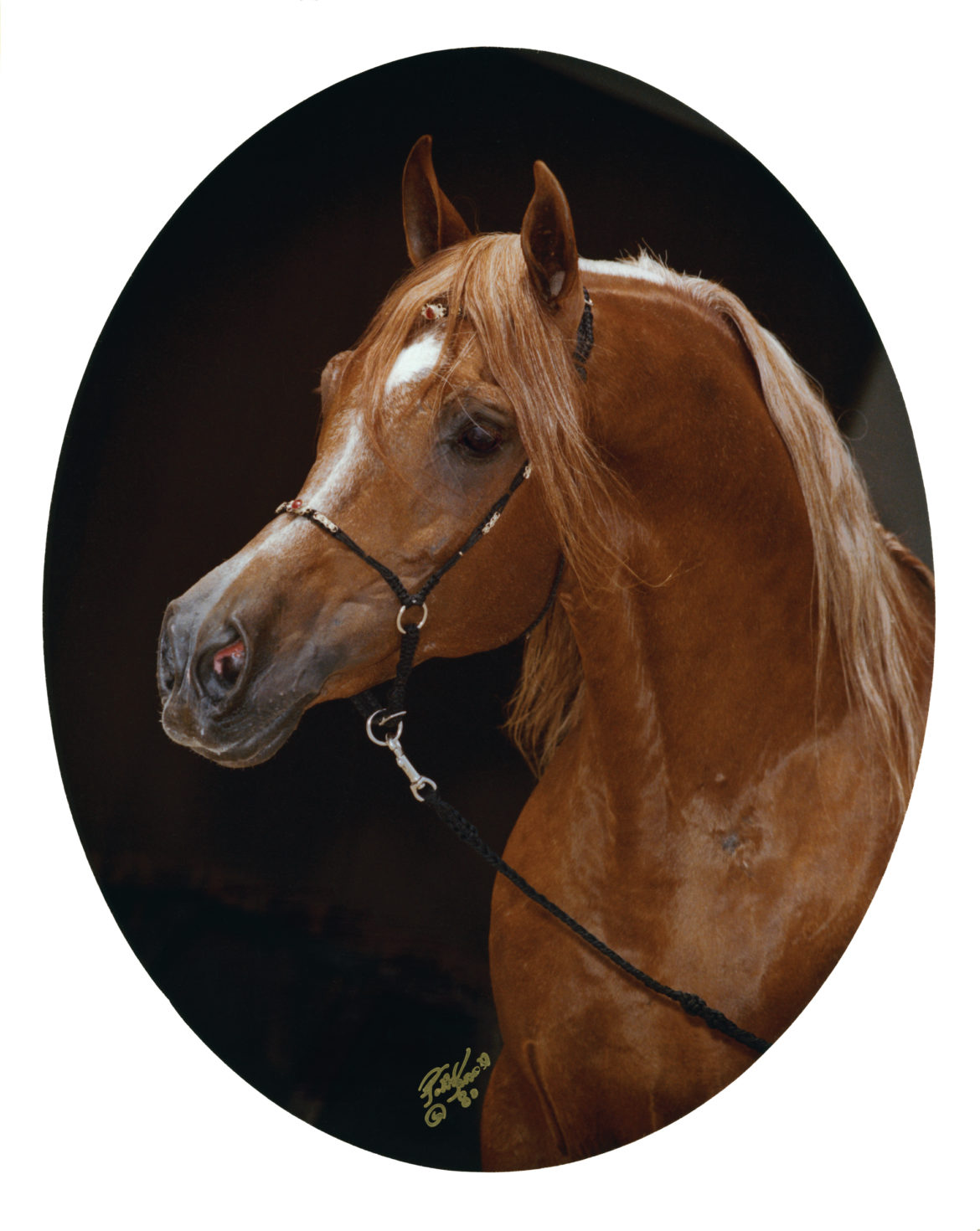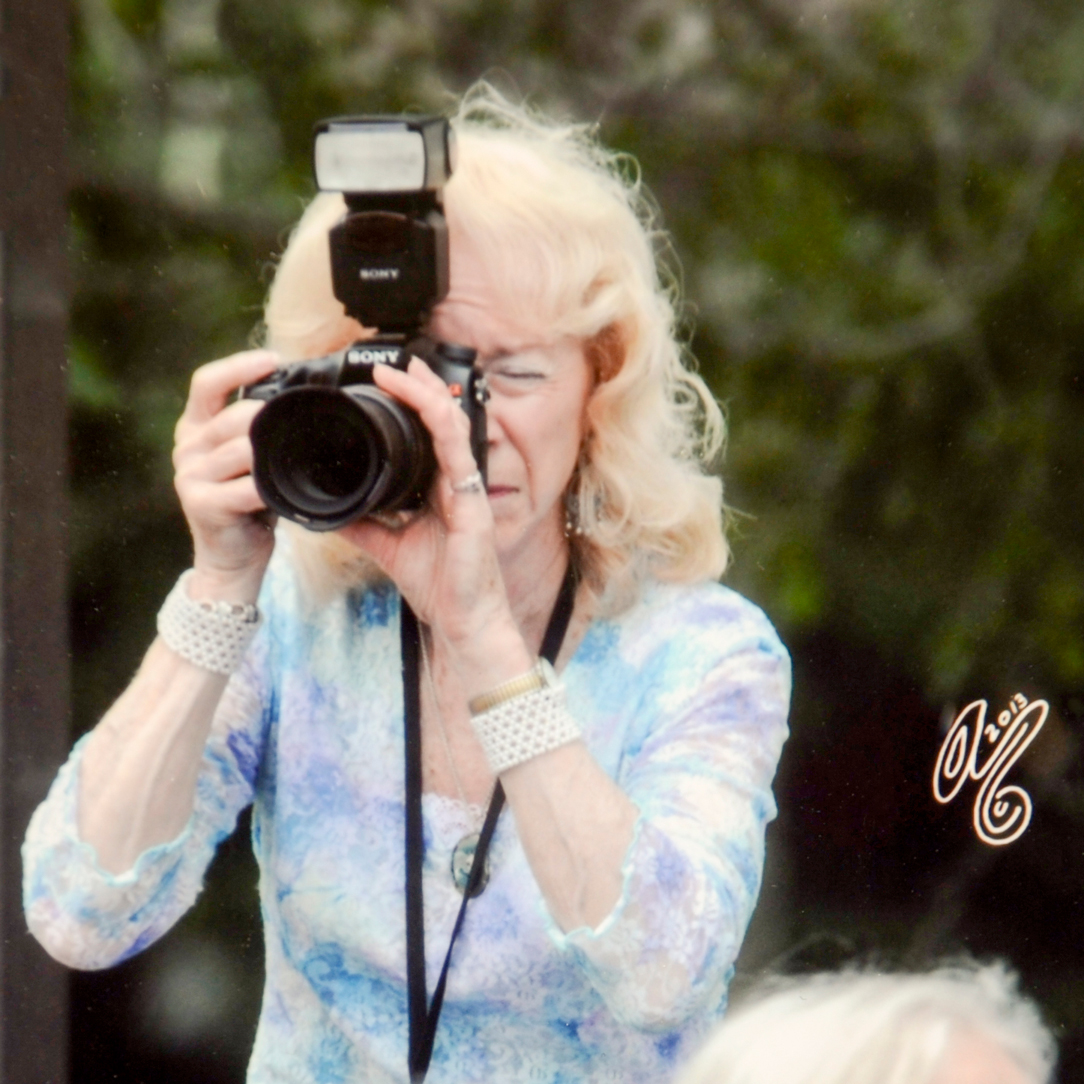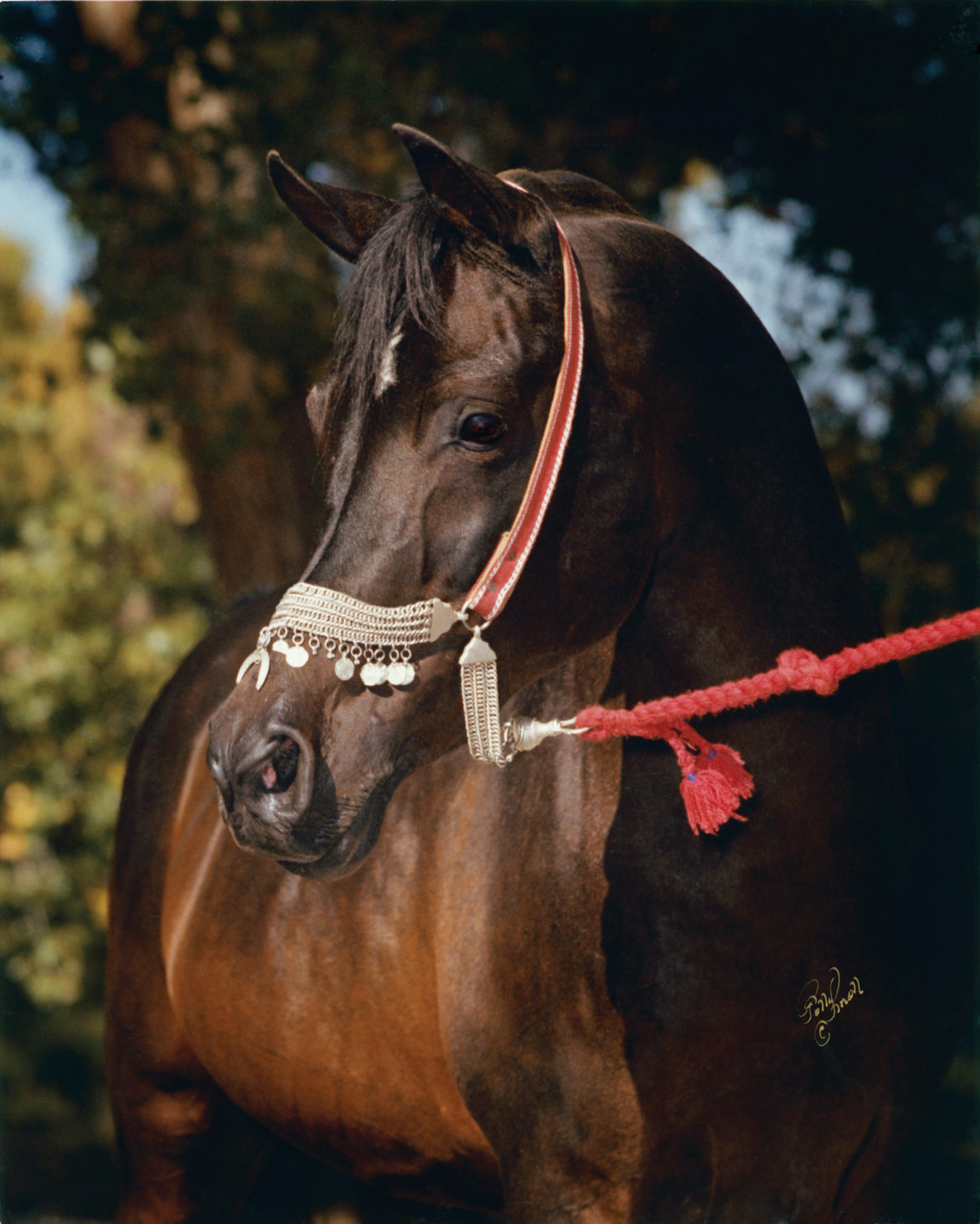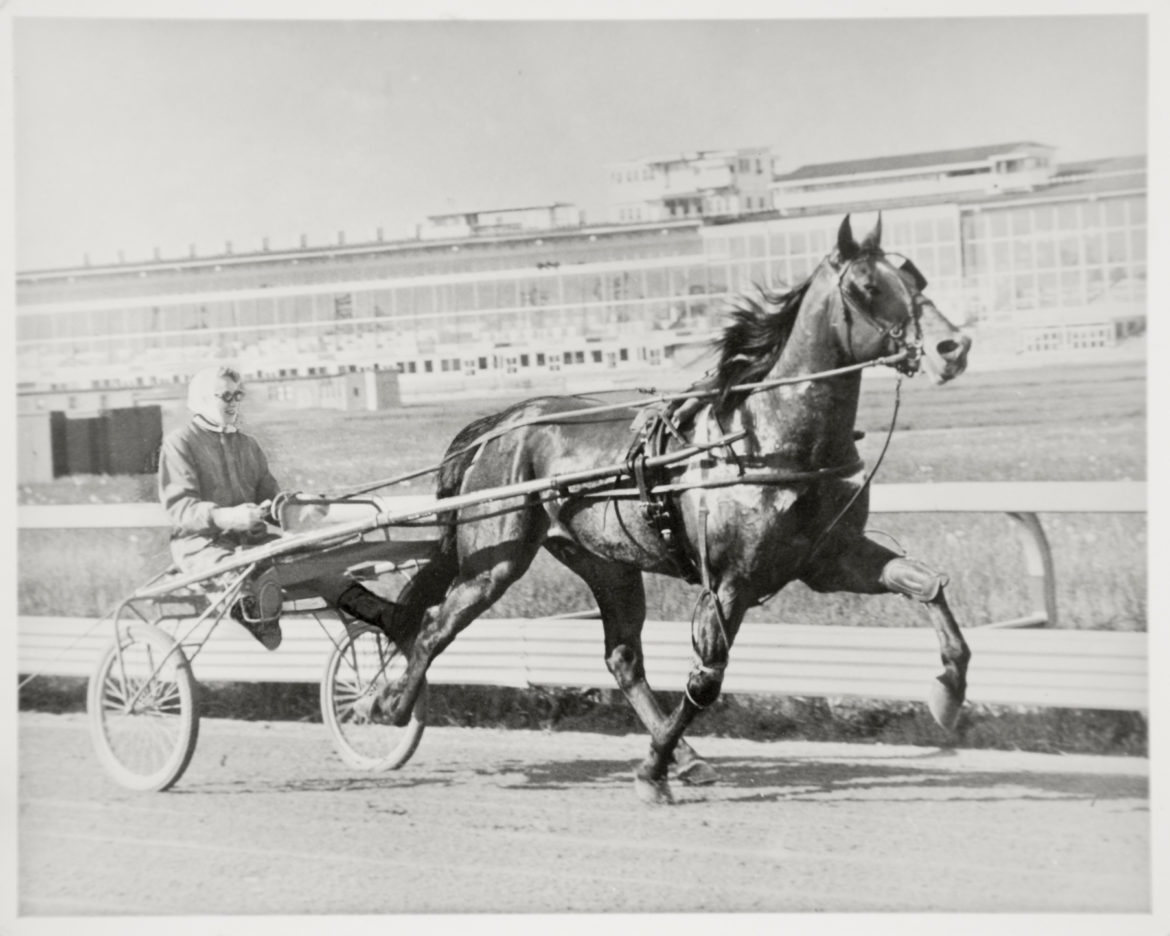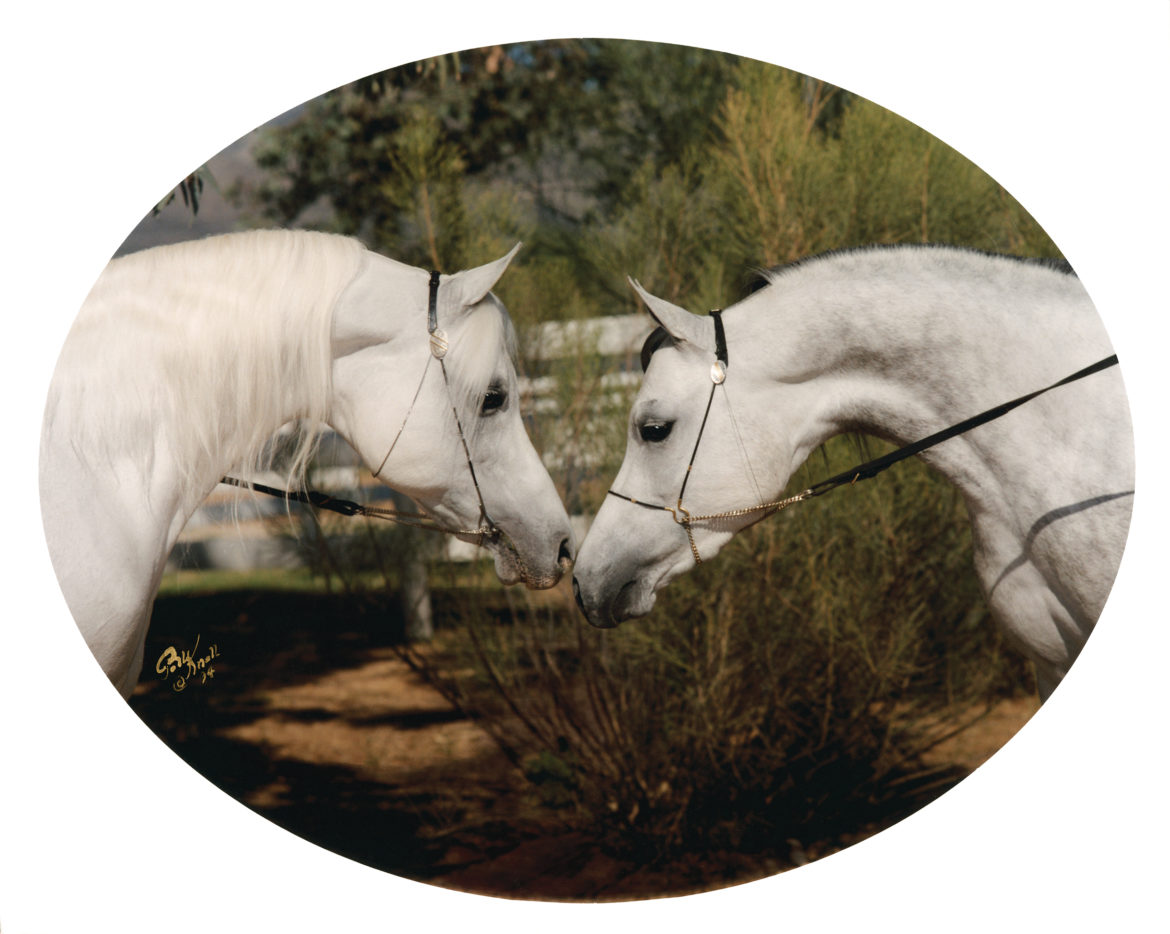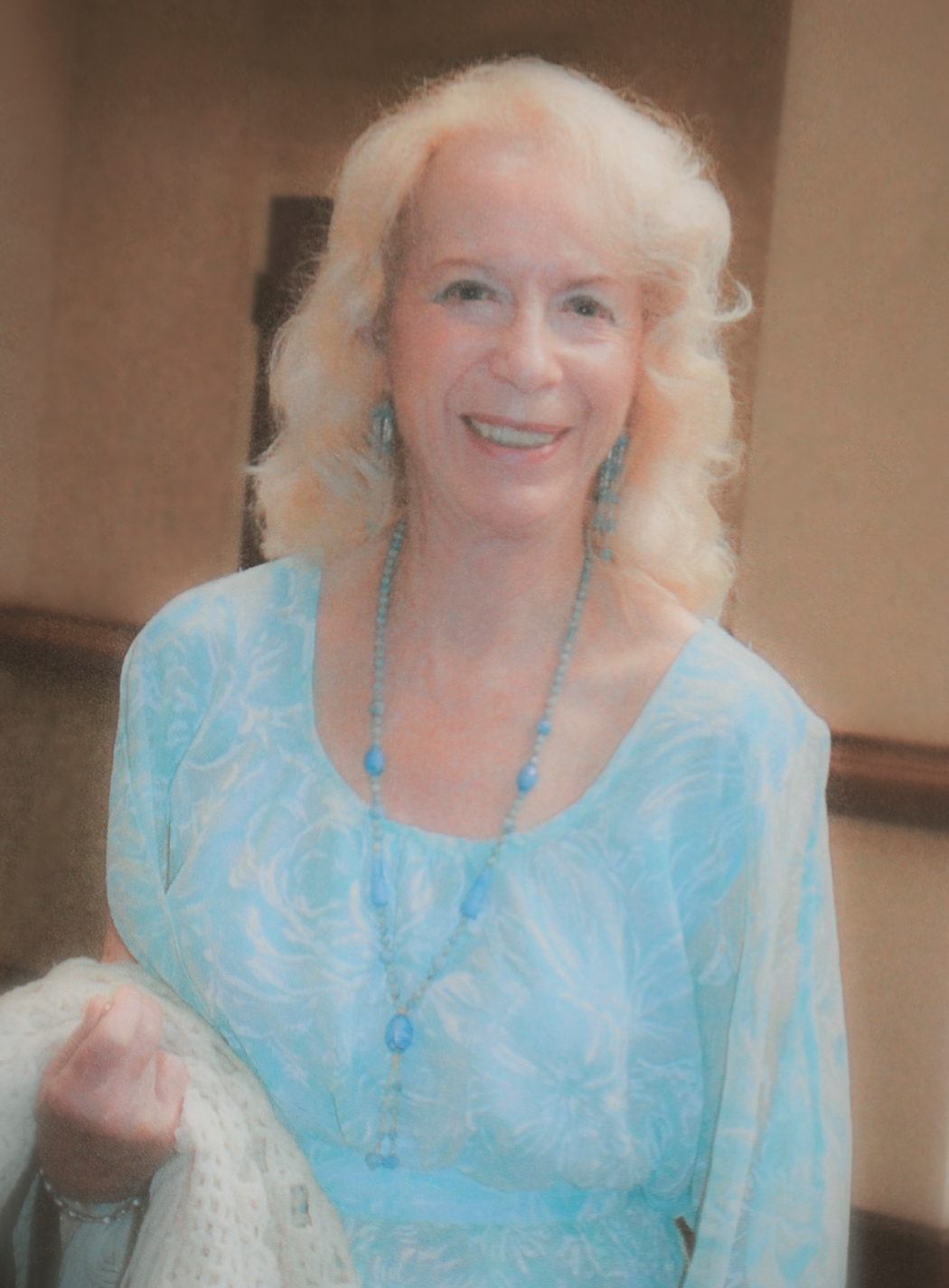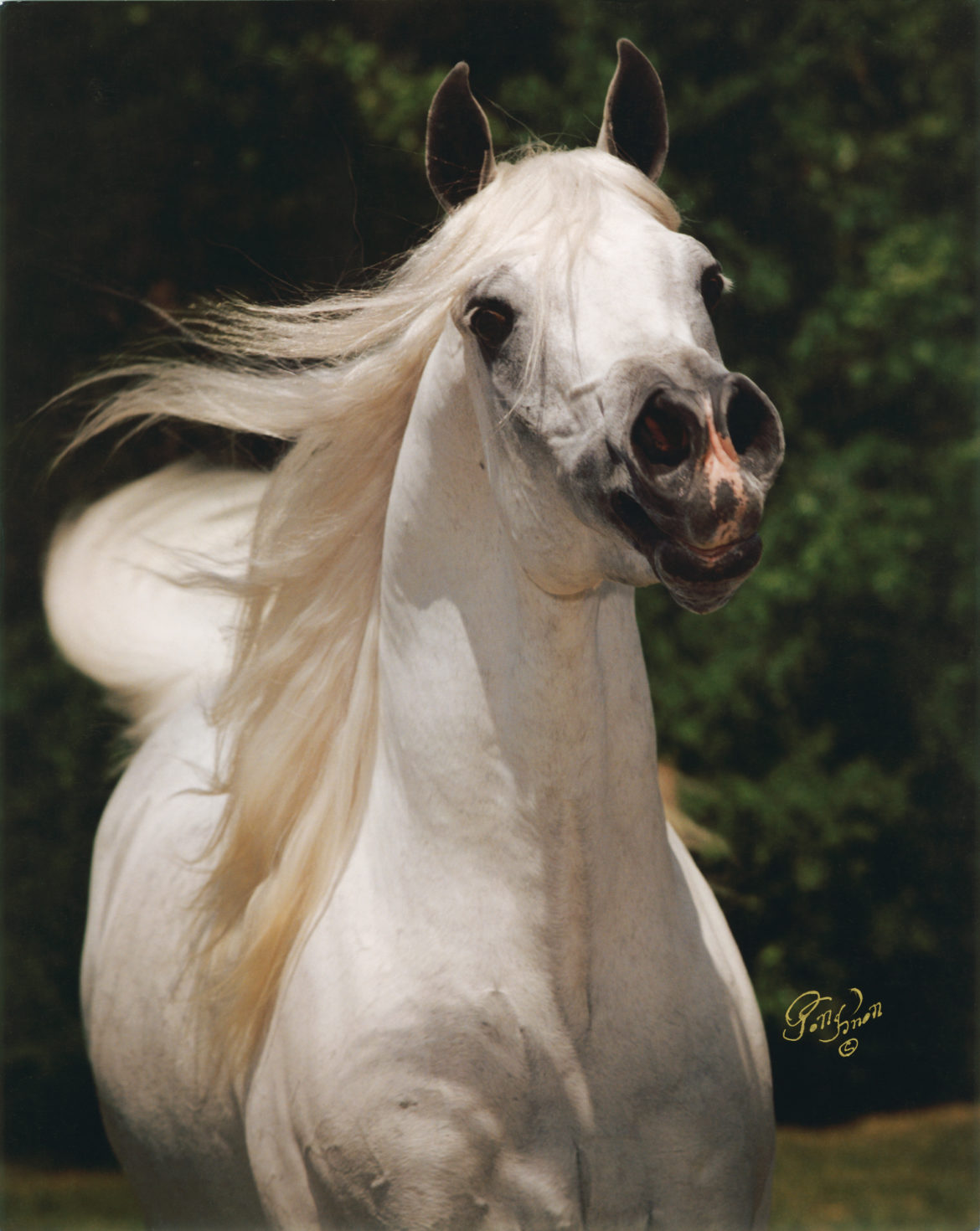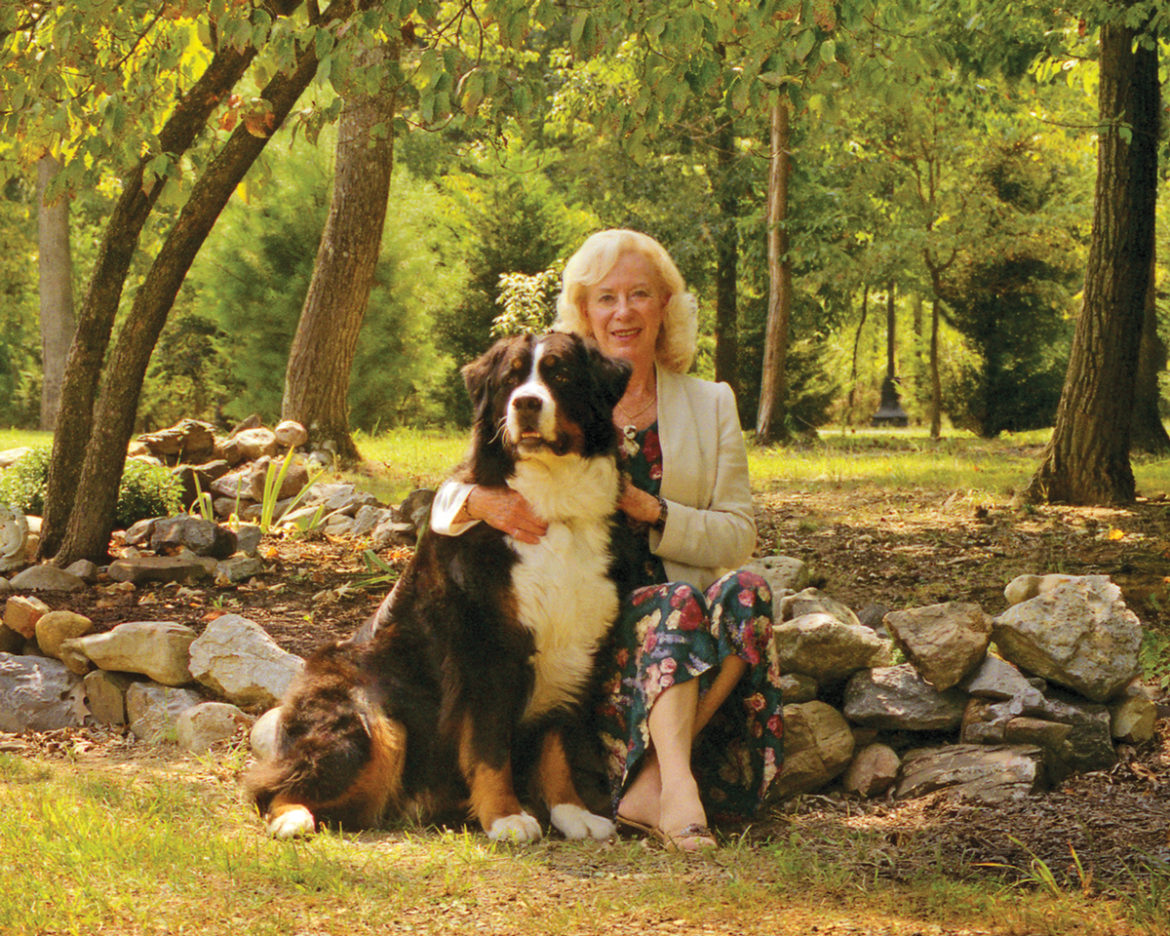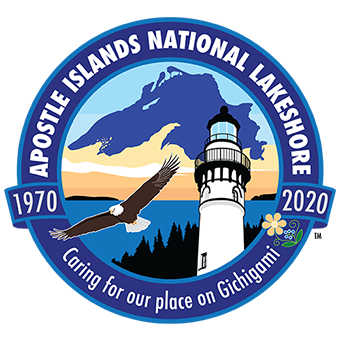
By: Karla Jensen
Her soul is Arabian yet she hails from Wisconsin. The sanctuary where she feels most at home is among the animals she loves. Her passion leans more toward horses than humans, but she gracefully spins artistic expression on the index finger of the Arabian horse industry like a globetrotter. She is a celebrity veiled in the ordinary, humble and quiet about her reputation, and she lives next door. She is Polly Knoll, artist and photographer of the majestic Arabian horse, and her story is amazing.
Polly Knoll carries the influence and status of a superstar, only in an entirely different genre, the equine industry. In 2013, the Pyramid Society, founded in 1969 to preserve the Egyptian Arabian horse, awarded Polly the most prestigious Trustee Award for serving her industry like no one else. Knoll is a Johnny Carson-like celebrity, keeping a low profile. From her youth onward, she fell hard for horses with an eternal schoolgirl crush; their mystery and their beauty have been her livelihood for half a century.
In grade school and high school, she haunted the local library for books about all species of equines. She learned to ride, studying English, Western, dressage, jumping, along with learning to train and drive harness race horses. She entered Milwaukee State Teachers College but at the last minute decided to switch to Prospect Hall Secretarial School. “Later, I studied real estate and for a couple summers took a Standardbred trotting mare to the races where I was the only single woman with a horse on the grounds.” She studied photography for three years at night school and was secretary to the chief surgeon at the VA hospital. She also worked for the VP in charge of research at American Scientific Labs in Madison and notes, “Working with all the vets and technicians gave me an opportunity to peruse incoming literature and study the latest equine problems.”

Knoll sparkles with the knowledge of her unlikely incredible journey. She was a single divorced parent and odds against becoming a successful photographer were high. Her daughter Jan, her joy, was born in 1961, and it soon became evident she needed a livelihood to raise a child. Polly’s mother honored her with $500 to purchase photography equipment. “I purchased a 4×5 Super Speed Graflex. Great for action, racehorses or the show ring. I constructed a dark room in the basement of my house and printed thousands of black and white photos.” With confidence, she vowed to make a success of her life and her career flourished. Her mother, who had retired from a nursing career in Ohio, moved to Beaver Dam to help raise Polly’s daughter.
“Soon, I was working for all the major farms in Wisconsin. Then calls started coming from other states. While I was the official photographer at many of the state Arabian horse shows, I finally decided there were easier ways to die. The work proved too much for one person. Perhaps I could just photograph beautiful horses in their home surroundings and create the photos I was dying to try. Never in a thousand years did I believe my passion for horses coupled with cameras would become my life’s work – and it might not have, except for the escalating popularity of Arabian horses.” From Gleannloch Farms in Texas, which was an Arabian horse paradise for artists like Polly, to Egypt, Pakistan and Afghanistan, she has been fortunate to travel the world because of her work for prominent American and worldwide publications.

Knoll’s path to improvement in the photography field started early and she never stopped taking lessons from mentors. “I knew several people who were successful equine photographers and consulted many about their profession. My favorite was John Horst.” She also referred endlessly to the 1952 book Portraiture of Horses. “George Ford Morris’ book was popular even before Arabian horses came into fashion,” said Polly. “He photographed and painted the greats, like Man O’ War and trotting legend Greyhound.” To Polly, Morris’ book is the Holy Grail, a bible of all things horse photography and art related. Her copy is tattered from years of use like an ancient talisman. She searched for that book in her office among hundreds of vintage horse magazines and memorabilia and stacks of relics she has been collecting for what looked like eons. Knoll has used and nearly memorized this book more than any other resource to perfect her technique. “His thing was background, lighting and color. I attempted to incorporate Morris’ techniques into my work. He taught me to consider first the lay of the land, followed by considering placement of the horse.”
Polly surprises. She is not one to flaunt her success. She is like a hidden favored piece of china at the back of the cabinet that sparkles, but you might forget it is there. Beaver Dam doesn’t know what a gem we have in Polly. She is as elegant as the equine she captures on film, but a shrewd businesswoman at the same time. Her home, like her personality, is not extravagant, and she preserves items of great value like an archivist. There is a story behind every door. She is eager to point out her favorite mementos such as decorative horse halters linked to a famous person or time, or her authentic print by Rosa Bonheur, an artist who inspired Polly and is known for her timeless paintings.
Industry professionals share their own vocabulary and so does Polly. She speaks a language of

her own that makes holding a conversation with her seem like you might need to polish up on horse terminology. This horseman turned secretary turned photographer reels off names of award-winning horses and history like salt falls from a shaker. She name-drops celebrity horse lovers and owners, including her famous client Patrick Swayze. “Patrick was a very intense person but easy to work with. I wanted to photograph his stallion Tammen with no halter, which was not possible so horseman Tom McNair dyed twine the color of the horse. I was concerned when Patrick wound the twine tightly around his hand and around the horse’s jaw, but he insisted that he’d be fine. I kept the twine.” Knoll related what a multi-talented individual Patrick was and she keeps his photo on her piano as a reminder of their friendship. His famous photo is preserved in Knoll’s elegant coffee-table book Treasures of a Lifetime: A look into the heart and soul of the true Arabian horse. A shining achievement, the book is available online and at The Seippel Arts Center where Knoll served on the exhibit committee and as a docent for many years. Horse enthusiasts and industry insiders who were familiar with Polly’s reputation would enter the Seippel Center and simply be in awe of sharing the same room with her.
Knoll continues to be honored for her work and her entire career. The Kentucky Horse Park Museum showcased her work in an exhibit of 50 enlarged photos in 2014. This coincided with the presentation of the 2013 Trustee Award at the Egyptian Horse Event. A DVD showing many of Knoll’s photos was shown as the narrator read a script. The audience gave her a standing ovation. Ironically, as Knoll discussed her career highlights and accolades, she had just received the mounted photos from that exhibit. Still boxed up in her kitchen, we opened them together, and it was Christmas all over again right there by the kitchen table. We marveled at the beauty and preciseness caught on camera and the thrill of seeing a lifetime of work in one’s hands. “Arabians are the most beautiful of all horses,” claims Polly. She has stuck by that claim for decades and has proven it time and time again.

